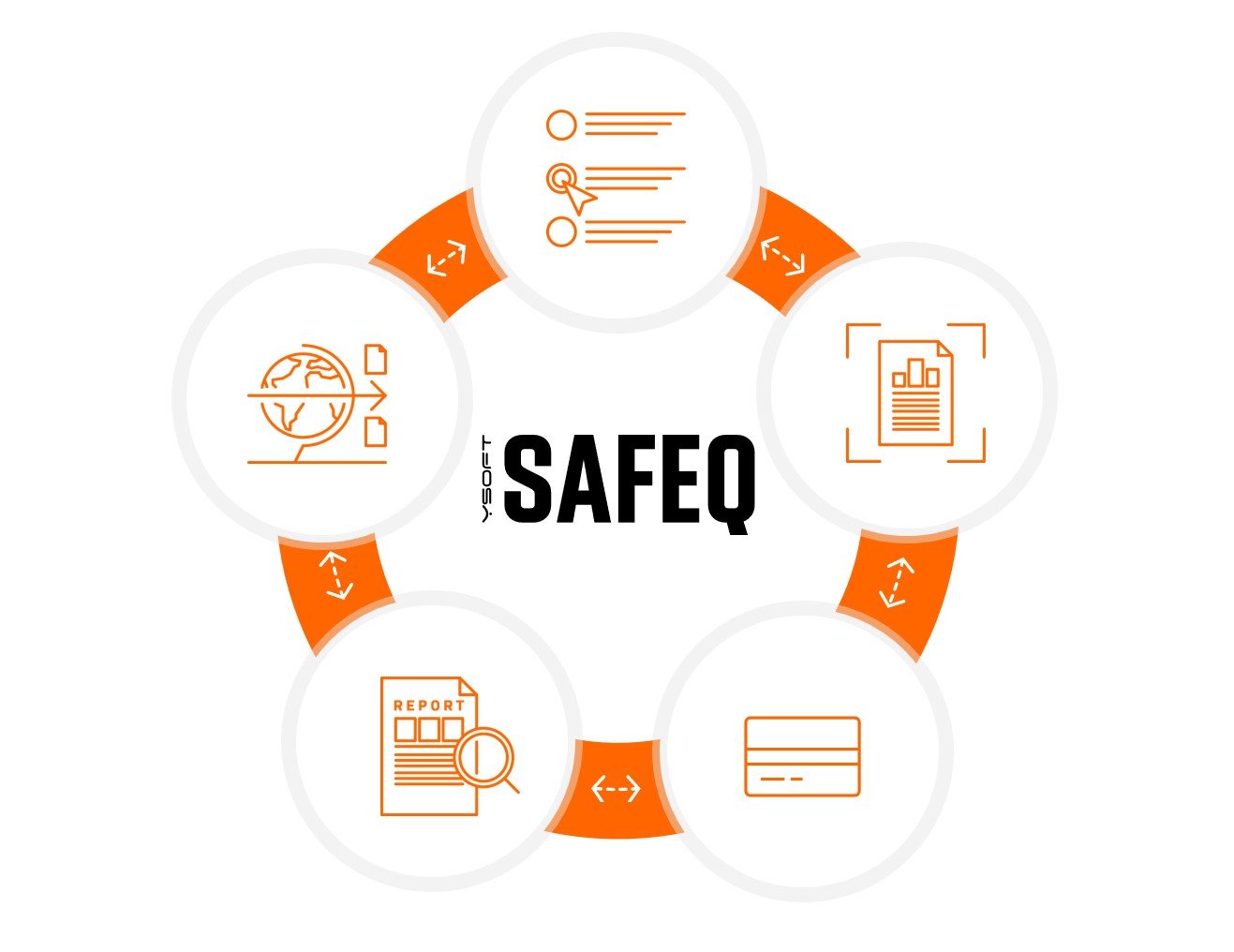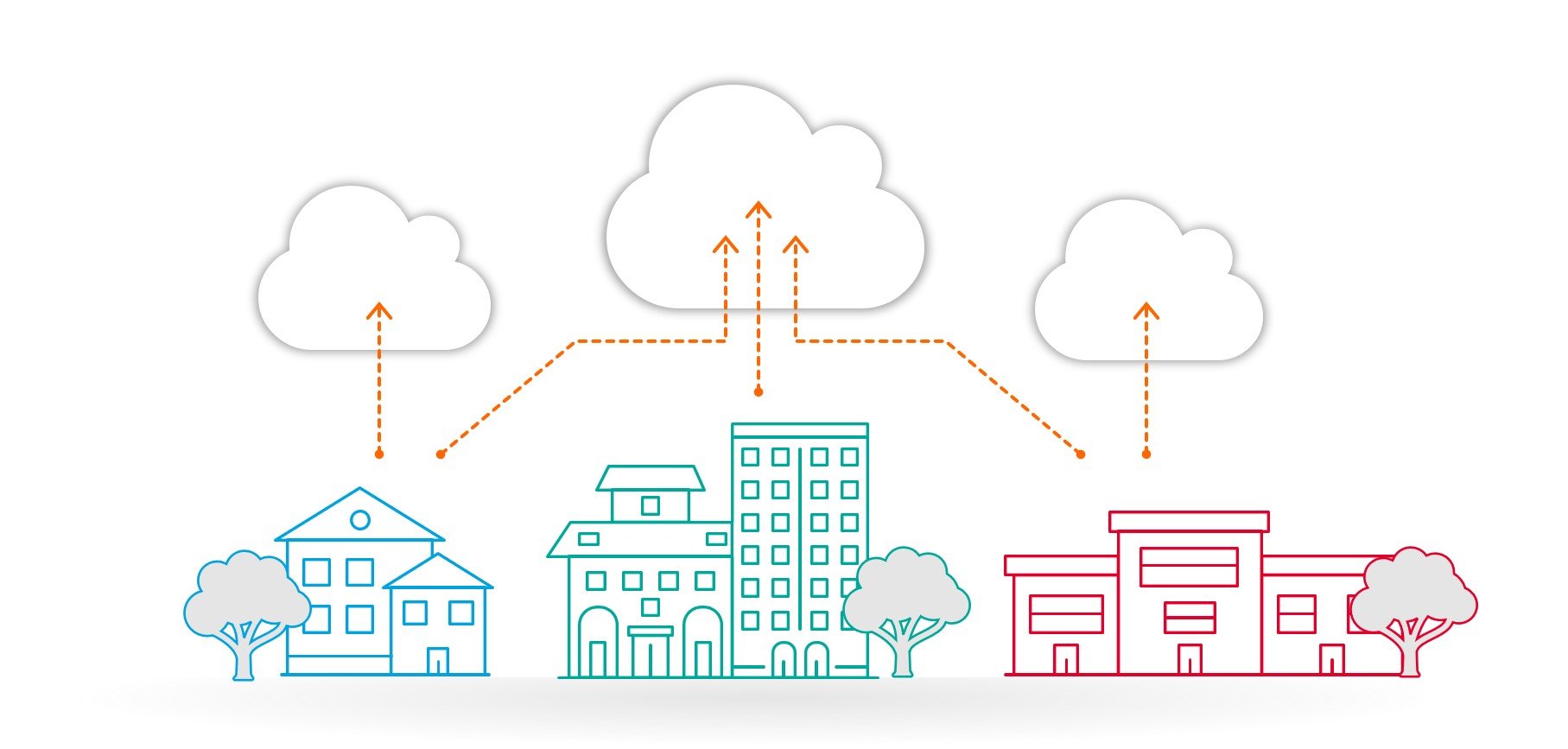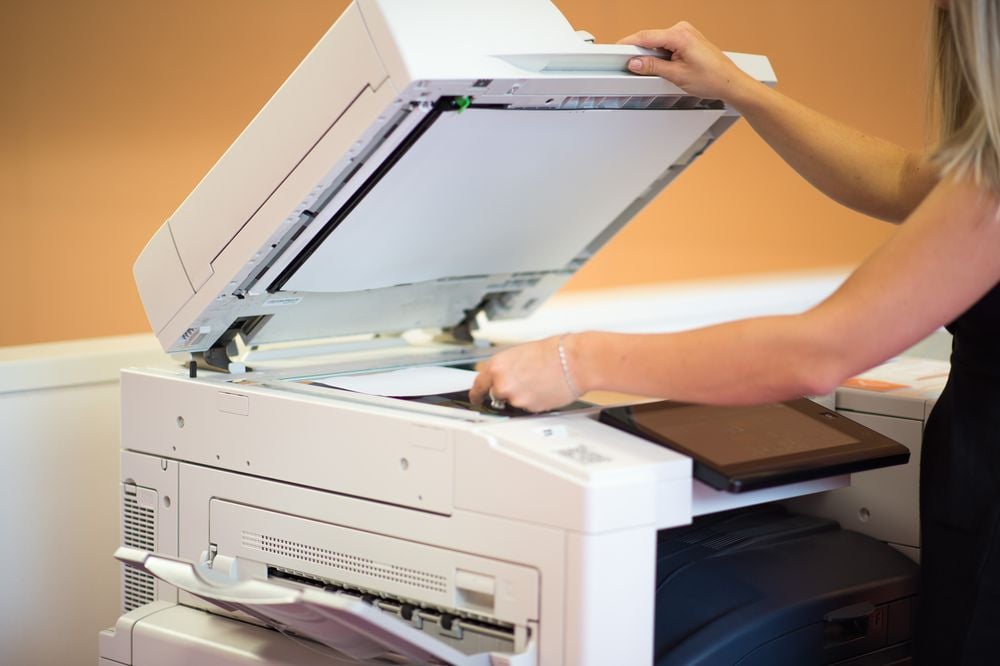A growth platform
built for tomorrow's print needs
Boost IT efficiency with SAFEQ’s scalable
building block architecture–and shape your
print and capture environment, your way.

Drive cost-effective scalability
YSoft SAFEQ is a software platform for office printing, built to enable cost-effective IT infrastructure expansion whenever you need it. With high availability, reliability, and agility at its core, SAFEQ is a platform for growth.

Build your own environment
SAFEQ gives you access to products tailored to your every need. Design a custom-fitted print solution that meets your technical goals, with a building block architecture, easy integrations, and multiple hosting options.

Building block Architecture
Build your ideal print environment from the ground up. As your needs evolve, SAFEQ scales with you.
Stacked with value
Get more out of your solution with enhanced integrations and extensions for print and capture.
On-prem or cloud-powered
SAFEQ can be hosted anywhere, whether it’s public cloud, private cloud, on-premises, or a mix.
Vertical & horizontal scalability
The building block architecture, the power behind our platform, is designed to easily scale both vertically (single site) and horizontally (multiple sites). Here’s what that means:

Scale vertically
Seamlessly expand your print environment capacity. The platform’s agility lets you add print devices (like MFDs), features, and users when needed.
Scale horizontally
Expand the reach of your print environment when your growth demands it. Provide access for new remote offices to your print ecosystem with ease.
scale with unique needs
Instead of offering SAFEQ as an all-or-nothing deal, leverage the solution to cluster tiers and address unique needs for each location when necessary.
Customize the workflow to fit your needs
You need to be agile to meet the changing needs of your company. Solutions that are engineered for scalability and flexibility will help you. The custom-friendly nature of SAFEQ allows your IT team to create and recreate ideal print workflow as needs change and the organization grows.

Leverage safeq for all your print & capture needs
Document capture
Take the complexity out of scanning with SAFEQ 6's secure capture capabilities. Streamline your scan capacities and take global control of all things print and capture. Make scanning a safe and easy feat.
Explore Document CaptureOffice printing
The SAFEQ path provides centralized print management and digital workflows which support business growth while solving cost, security, and accountability requirements—and makes print management easy for your IT team.
Explore PrintingCloud availability
We’ve built a platform to get your print moved to the cloud, quickly and hassle-free. With SAFEQ, let your IT team free from repetitive print tasks. Our cloud-hosted infrastructure makes print the easiest part of your IT workload.
Explore Cloud InfrastructureGet Creative with Extensions & integrations
3rd party connections
YSoft SAFEQ can be integrated with and securely deliver documents to 3rd party applications. More than extensions, SAFEQ has a Connector Library for automatic delivery of scanned documents.
Command line tools and print networks
Using customized scripts, YSoft SAFEQ can automate administrative tasks and other tasks associated with importing content into the print platform.
Payment gateways and providers
PayPal and DIBS payment gateways are standard in the SAFEQ platform. On top of that, we offer easy integration with a variety of payment gateways, all listed here.
Additional customizations
From offline accounting to guest access, your SAFEQ environment can be tailored to best fit your company's changing needs–now or in the future.
Technical Specifications
Y Soft is a business committed to continuous innovation—The growth platform has reached its 6th version.
Below are the tech specs for the version, relevant for on-premises, cloud, and hybrid deployment.
Recommended Hardware for Single Server Deployment
Memory
8 GB free RAM
Hard Disk Space
100 GB
Connection to storage with a throughput of at least 150MB/s and 300 IOPS.
CPU
Dual Core 2 GHz processor or higher
Network
1 Gbit/s
Additional Information
Alternatively, installation in a VM with at least 2 cores and memory reservation set to the full amount of RAM allocation
Supported
Platforms
Standard print
- Windows
- MAC
- UNIX
- Citrix Virtual Apps and Desktops service (XenApp & Xen Desktop service), Virtual Desktops (XenDesktop) & Virtual Apps (XenApp)
- other LPR compatible environments
Mobile Print
- Print from any mobile device through email or web upload
- YSoft Wireless Print supports Android and iOS devices
- Mopria Print Services
Operating System
- Windows Server 2012 (64)
- Windows Server 2016 (64)
- Windows Server 2019 (64)
Supported Languages
To ensure your colleagues get the best experience while using SAFEQ, we're making sure there are no blockers for them to work the software. This includes localization, which is why we offer a wide range of supported languages within SAFEQ's components.
Available languages for Print management
- YSoft SAFEQ Client: Catalan, Chinese (simplified/traditional), Croatian, Czech, Danish, Dutch, English, Estonian, Finnish, French, German, Greek, Hungarian, Indonesian, Italian, Japanese, Kazakh, Korean, Latvian, Lithuanian, Malaysian, Norwegian, Polish, Portuguese (Brazil/Portuguese), Romanian, Russian, Serbian (Latin/Cyrillic), Slovak, Slovenian, Spanish, Swedish, Thai, Turkish, and Ukrainian.
- User Interface: Arabic, Bulgarian, Catalan, Chinese (simplified/traditional), Croatian, Czech, Danish, Dutch, English, Estonian, Finnish, French, German, Greek, Hebrew, Hungarian, Indonesian, Italian, Japanese, Kazakh, Korean, Latvian, Lithuanian, Malaysian, Norwegian, Polish, Portuguese (Brazil/Portuguese), Romanian, Russian, Serbian (Latin/Cyrillic), Slovak, Slovenian, Spanish, Swedish, Thai, Turkish, and Ukrainian.
Languages with Dictionary Support
These languages are recognized by Optical Character Recognition (OCR) for anyone with that feature.
- Latin, Cyrillic, Greek or Armenian characters, for which the FineReader Engine provides dictionary support: Armenian (Eastern, Western, Grabar), Bashkir, Bulgarian, Catalan, Croatian, Czech, Danish, Dutch (Netherlands and Belgium), English, Estonian, Finnish, French, German (new and old spelling), Greek, Hungarian, Italian, Indonesian, Latvian, Lithuanian, Norwegian (Nynorsk and Bokmal), Polish, Portuguese (Portugal and Brazil), Romanian, Russian, Slovak, Slovenian, Spanish, Swedish, Tatar, Turkish, and Ukrainian.
- Japanese, Korean and Hangul with dictionary support, Chinese (PRC and Taiwan).
- Thai with dictionary support.
- Hebrew with dictionary support, Yiddish.
- Arabic with dictionary support, Farsi.
- Latin, Azerbaijani (Latin), Russian (old spelling) with dictionary support.
Additional Languages
Latin, Cyrillic, or Greek characters: Abkhaz, Adyghian, Afrikaans, Agul, Albanian, Altaic, Avar, Aymara, Azerbaijani (Cyrillic), Azerbaijani (Latin), Basque, Belarusian, Bemba, Blackfoot, Breton, Bugotu, Buryat, Cebuano, Chamorro, Chechen, Chukchee, Chuvash, Congo, Corsican, Crimean Tatar, Crow, Dakota, Dargwa, Dungan, Eskimo (Cyrillic), Eskimo (Latin), Even, Evenki, Faeroese, Fijian, Frisian, Friulian, Gagauz, Galician, Ganda, German (Luxemburg), Guarani, Hani, Hausa, Hawaiian, Icelandic, Ingush, Irish, Jingpo, Kabardian, Kalmyk, Karachay-balkar, Karakalpak, Kasub, Kawa, Kazakh, Khakass, Khanty, Kikuyu, Kirghiz, Koryak, Kpelle, Kumyk, Kurdish, Lak, Latin, Latvian Gothic, Lezgi, Luba, Macedonian, Malagasy, Malay, Malinke, Maltese, Mansy, Maori, Mari, Maya, Miao, Minangkabau, Mohawk, Moldavian, Mongol, Mordvin, Nahuatl, Nenets, Nivkh, Nogay, Nyanja, Ojibway, Old Slavonic, Ossetian, Papiamento, Provencal, Quechua, Rhaeto-Romanic, Romany, Rundi, Russian (old spelling), Rwanda, Sami (Lappish), Samoan, Scottish Gaelic, Selkup, Serbian (Cyrillic), Serbian (Latin), Shona, Somali, Sorbian, Sotho, Sunda, Swahili, Swazi, Tabasaran, Tagalog, Tahitian, Tajik, Turkmen (Latin), Tok Pisin, Tongan, Tswana, Tun, Turkmen, Tuvinian, Udmurt, Uigur (Cyrillic), Uigur (Latin), Uzbek (Cyrillic), Uzbek (Latin), Vietnamese, Welsh, Wolof, Xhosa, Yakut, Zapotec, and Zulu.
Special languages
- Artificial languages: Esperanto, Interlingua, Ido, and Occidental.
- Programming languages: Basic, C/C++, COBOL, Fortran, JAVA, and Pascal.
- Simple chemical formulas
- Digits: The support and availability of the listed specifications and functionalities varies depending on operating systems, applications and network protocols as well as network and system configurations.
Ready to let your print
soar in the Cloud?
Get started with a guided demo of SAFEQ Cloud.
Start Demo Now